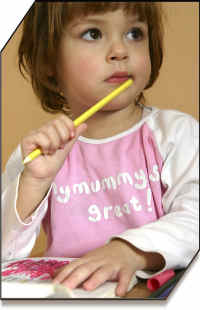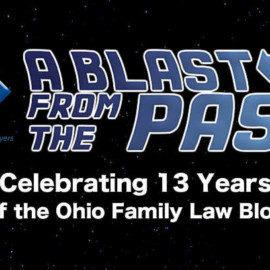 We want to thank Daniel Pollack, a professor at Yeshiva University’s School of Social Work in New York City and a frequent expert witness in child welfare cases for sending an article he published “Homeschooling and Child Protection”, Policy & Practice (Feb. 2012). The issue that he wrote about is an important one in the child welfare world and one that has hit home in real life recently in Dayton, Ohio. We have adapted this blog article in large part from Professor Pollack’s article.
We want to thank Daniel Pollack, a professor at Yeshiva University’s School of Social Work in New York City and a frequent expert witness in child welfare cases for sending an article he published “Homeschooling and Child Protection”, Policy & Practice (Feb. 2012). The issue that he wrote about is an important one in the child welfare world and one that has hit home in real life recently in Dayton, Ohio. We have adapted this blog article in large part from Professor Pollack’s article.
Homeschooling: What is it and why does it exist?
Homeschooling, defined as “parent-directed education that meets the requirements for regular school attendance,” has become much more common in the United States. As of 2007, there were more than 1.5 million students being homeschooled in the United States. When parents of homeschoolers are asked why they chose to homeschool their children, the most popular answers were concern about the school environment, desire to provide religious and moral training, and dissatisfaction with the academic instruction available at their schools. As it is becoming more popular, each state has regulated the practice of homeschooling, making rules and requirements to which parents must strictly adhere.
Homeschooling: The Debate
However, with the growing trend comes growing concerns. A major concern arising is child protection. More than half of the cases that Child Protective Services investigates are reported by school officials. With the increase of homeschooling, Child Protective Services have seen a decrease in the number of cases reported for child neglect and abuse. Child welfare advocates are becoming increasingly concerned about homeschooled children, believing that those children are at an increased risk of having abuse go undetected because they do not attend school. Despite the growing concerns, there has been no confirmed link between homeschooling and intervention by CPS. There has been an increase of homeschooling parents taking legal action against CPS for unwarranted and illegal searches of their homes.
Child Protective Services generally cannot “seize” a child from their home without an order from the court, the consent of a parent, or exigent circumstances necessitating that the child be removed, but many claim that CPS has been overstepping their authority. Homeschooling parents fear that their Fourth Amendment rights against unwarranted searches and seizures are disappearing as a result of homeschooling their children.
Whether CPS should have to abide by the restrictions of the Fourth Amendment for child protection searches and seizures becomes a topic of debate following the death of an abused or neglected child. Often these deaths occur when CPS was unaware of the abuse or neglect situation or when CPS was unable to continue or complete an investigation due to Fourth Amendment protections. However, despite all of the debate, homeschooling advocates find no need for additional scrutiny or restrictions on homeschooling parents because there has been no conclusive link between homeschooling and undetected child abuse and neglect.
Many states do impose strict regulations on homeschooling, but it is easy for homeschooled children to fall through the cracks of the education system. A local Dayton, Ohio area case is an example of this problem. Makayla Norman was a 14-year old girl with cerebral palsey whose mother had filed homeschooling paperwork for her in 2004, the year that Makayla was at kindergarten level. However, no other paperwork was ever filed for Makayla. In 2011, Makayla died weighing just 28 pounds. While criminal charges have been filed against Makayla’s mother and nurses for her death, Dayton Public Schools will receive no sanction or penalty for losing track of the young girl. In an incident based on “human error”, Makayla’s handwritten paperwork was never re-entered into Dayton Public Schools’ online system. Therefore, when subsequent paperwork was not filed, no one knew that Makayla may have been in danger.
An Associated Press article titled, “District Lost Track of Malnourished Ohio Girl” which was also centered on Makayla, reported that according to Patrick Gallaway, an Ohio Department of Education spokesman, an estimated 22,000 Ohio children are homeschooled. Yet, the numbers are not certain or accurate; the article further reports that Columbus, Ohio school district spokesperson found 477 homeschooled children, while state data reported that there were no homeschooled children in the Columbus School District.
While the debates rage on, few changes have been seen on the Ohio homeschooling front. There are still no penalties or sanctions for school districts that lose track of homeschooled children in Ohio. Homeschooling advocates still support their right to homeschool children without interference from CPS. Ohio Christian homeschooling advocates do not want the new regulations, stating in the Associated Press article, that the new regulations would, “punish the majority for the misdeeds of a few.”
For all that homeschooling may provide that public schools cannot, it cannot be denied that children who are homeschooled lack the benefit of having multiple school officials look over them five days a week. If there is detectable abuse within a homeschooling home, the perpetrator is able to keep the child away from the protective eyes of school officials. Regardless of the lack of conclusive connection on the heated debates, it seems clear that when children are homeschooled, there is a lack of interaction between those children and the school officials who must report any suspected abuse, and that lack of interaction may be fatal for the children caught in the middle.
© 2012, Ohio Family Law Blog. All rights reserved.



